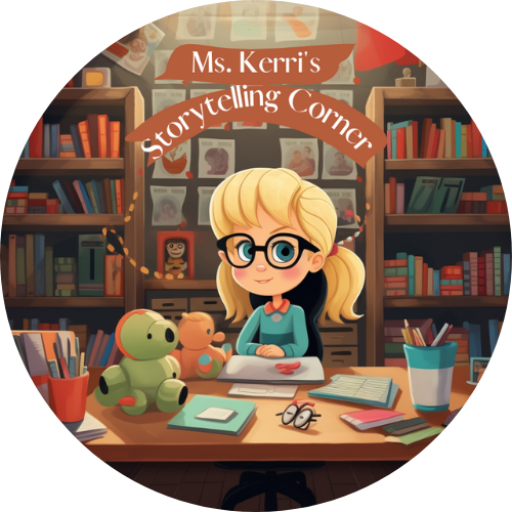Empowering Reluctant Readers: A Comprehensive Guide for Parents and Teachers
Introduction
The Magic of Words: Unlocking the Boundless Worlds of Reading
Ah, the power of words! They have the uncanny ability to whisk us away on fantastical adventures, make us ponder life’s deepest mysteries, and ignite our imagination like a starburst in the night sky. Reading is not merely an academic pursuit but a journey of personal growth and enlightenment.
It opens doors to new perspectives, expands vocabulary, enhances critical thinking skills, and nurtures a lifelong love for learning. However, in today’s digital age, where distractions lurk around every corner and attention spans waver, inspiring a love for reading can be quite challenging.
The Mighty Hurdles: Challenges Faced by Reluctant Readers
Reluctant readers – those hesitant souls who view books as foes rather than friends and prefer the allure of screens to inked pages – present a perplexing challenge to both parents and teachers alike. Their resistance towards reading may stem from various sources.
Some lack interest in books altogether; others struggle with reading skills or harbor negative experiences that left them disenchanted. These hurdles can be disheartening for those who wish to impart the joys and benefits of reading.
However, fear not! With patience, creativity, and some well-crafted strategies at your disposal, you can transform reluctant readers into avid book enthusiasts.
A Guiding Light: Tips and Strategies for Parents and Teachers
In this comprehensive guide brimming with wisdom aplenty, we aim to equip parents and teachers with an arsenal of effective tips and strategies to surmount these challenges together. From creating enchanting reading environments at home or in the classroom to making reading an engaging experience bursting with laughter and wonder – we shall leave no stone unturned! Prepare yourself for an enlightening journey through various methods designed specifically for reluctant readers.
With our guidance, you’ll possess the knowledge and tools to ignite that long-dormant spark within their hearts, leading them towards a lifelong love affair with books. So, let us embark on this adventure together and kindle the flames of reading passion for our young ones!
Understanding Reluctant Readers

Definition of reluctant readers
Reluctant readers are those individuals who, despite possessing the ability to read, display a disinterest or resistance towards engaging in reading activities. These individuals may exhibit a lack of motivation or enthusiasm when it comes to books and often manifest a reluctance to pick up reading materials voluntarily. It is important to note that being a reluctant reader does not imply an inherent inability to read; rather, it signifies a psychological barrier or aversion towards reading.
Common reasons behind reluctance to read
Lack of interest in books: One common reason for reluctance to read lies in the absence of genuine interest in books. Some individuals may find other activities more appealing and fail to recognize the benefits and pleasure that can be derived from reading.
Difficulty with reading skills: Another significant factor contributing to reluctance is struggling with reading skills. When individuals encounter challenges with decoding words, comprehending text, or have difficulties with fluency, they may become frustrated or feel inadequate.
This can lead to avoidance behaviors and a lack of confidence when faced with reading tasks. Negative past experiences with reading: Negative experiences associated with reading can leave lasting imprints on an individual’s perception of books.
If someone has experienced ridicule, pressure, or punishment related to their previous encounters with reading—such as being held back by their peers or receiving harsh criticism—it can create apprehension and hinder their willingness to engage in future literary pursuits. By understanding the definition of reluctant readers and recognizing the underlying reasons behind their hesitation towards picking up a book, parents and teachers can better address these barriers and implement effective strategies for encouraging reluctant readers.
Click HERE to help your child learn to read in 90 days!
Creating a Reading-Friendly Environment at Home or in the Classroom

Designing an inviting reading space
Creating a cozy and inviting reading space can work wonders in inspiring reluctant readers to pick up a book. Think about it – who wouldn’t want to dive into the fascinating world of literature if they have a comfortable nook to curl up in?
Ensure that you have plush cushions, soft blankets, and maybe even a bean bag chair or two. The goal is to create an atmosphere where children and students feel relaxed and eager to explore the realms of storytelling.
Comfortable seating arrangements
When it comes to encouraging reluctant readers, comfort is key. Provide various seating options that cater to different preferences.
Some may enjoy sinking into a squishy armchair, while others might prefer sitting cross-legged on floor cushions. By giving them choices, you empower them to find their ideal spot for reading pleasure.
Adequate lighting and ventilation
Good lighting is essential for creating an optimal reading environment. Natural light is ideal but if that’s not possible, make sure your lighting fixtures are bright enough without causing strain on the eyes. Additionally, ensure that there’s proper ventilation in the area as fresh air can enhance focus and concentration.
Accessible bookshelves or libraries
Make books easily accessible by organizing bookshelves or setting up mini-libraries within reach of young readers’ hands. Arrange books by genre or theme so they can quickly find something that piques their interest. Consider placing some beloved titles prominently on display as well – seeing their favorite stories showcased can be incredibly enticing.
Incorporating reading into daily routines
To instill a love for books, integrate reading into daily routines both at home and in the classroom. Set aside dedicated time for silent reading each day, where everyone, including adults, dives into their favorite literature. Whether it’s before bedtime, during lunch breaks, or during peaceful mornings, making reading a part of everyday life helps normalize its importance.
Encouraging regular reading time
Establish a consistent reading schedule to ensure dedicated time for this enriching activity. Encourage children and students to set aside at least 20-30 minutes each day for independent reading. Make it clear that this is their special time to relax and explore new worlds through books.
Integrating books into other activities (e.g., cooking, gardening)
Infuse books into various activities to widen the scope of reading experiences. For instance, while cooking or baking with your child, incorporate a recipe book that engages them in both culinary skills and literary exploration. Gardening enthusiasts can explore plant-themed stories or even maintain a small garden library with titles related to flora and fauna.
By intertwining books with other hobbies and interests, you create unique connections that make reading even more enticing. Remember: creating an inviting space and incorporating books seamlessly into daily life can work wonders in fostering a love for reading among reluctant readers!
Making Reading Fun and Engaging

Choosing Age-Appropriate Books that Match Interests and Abilities
Finding the right book for a reluctant reader is like uncovering a hidden treasure. It’s essential to consider their interests, whether they are fascinated by magical creatures, action-packed adventures, or mysteries waiting to be solved.
By understanding what captures their imagination, you can embark on a quest to discover books that align with their passions. Furthermore, it’s crucial to assess their reading abilities accurately.
Matching the difficulty level of the text with their current skills will help prevent frustration or boredom that may discourage them from persisting. Remember, every reader has unique preferences and capabilities; tailoring your book choices accordingly is key.
Recommendations Based on Genres, Themes, or Specific Authors/Series
The literary world is vast and teeming with genres and themes suited for any taste. If your reluctant reader shows affinity towards fantasy realms filled with mythological creatures or epic quests, introducing them to authors like J.K. Rowling or Rick Riordan can ignite their passion for reading.
On the other hand, if they have an inclination towards contemporary realism peppered with relatable emotions, popular authors like Jacqueline Wilson or John Green might be an excellent starting point. Exploring different genres such as science fiction, historical fiction, mystery, or poetry broadens horizons and helps stimulate enthusiasm for diverse storytelling styles.
Utilizing Online Resources for Book Suggestions (e.g., Goodreads, BookTube)
In this digital era brimming with resources at our fingertips, online platforms prove invaluable when seeking book recommendations for reluctant readers. Websites like Goodreads provide user-generated lists and reviews that can guide parents and teachers in selecting suitable books based on age-appropriateness and quality content.
Incorporating BookTube into your search allows access to captivating video reviews, book hauls, and reading challenges specifically tailored for different age groups. These platforms not only offer valuable insights into popular and well-loved books but also cultivate excitement through the engaging enthusiasm of fellow bookworms.
Organizing Interactive Read-Aloud Sessions
Reading aloud is a powerful tool that allows reluctant readers to experience the joy of storytelling without the pressure of decoding words themselves. Organizing interactive read-aloud sessions creates a safe and welcoming space for them to immerse themselves in narratives. Choose captivating books that captivate their attention, and as you read, use expressive voices, gestures, and facial expressions to bring characters and plotlines to life.
Pause at pivotal moments to encourage anticipation and reflection. By modeling enthusiasm for literature yourself, you inspire curiosity in your reluctant reader.
Discussing Characters, Plotlines, and Emotions
Engaging in meaningful conversations about books after reading sessions can deepen a reluctant reader’s connection with stories. Encourage them to share their thoughts on characters’ motivations or how they relate to certain plot events or emotions expressed within the book’s pages.
By inviting discussion and providing an open forum for expression, you foster critical thinking skills while helping them develop empathy towards fictional characters’ experiences. Additionally, connecting story elements with real-life situations helps reluctant readers bridge the gap between literature and their own lives.
Encouraging Participation through Questions and Reflections
To foster active engagement during reading sessions, encourage participation by asking questions along the way. Prompt them to predict what might happen next or analyze characters’ decisions based on what they have read so far.
As they gain confidence in sharing their ideas openly, gently guide them towards reflecting on broader themes or overarching messages conveyed by the author. This not only strengthens their comprehension skills but also empowers them as active participants in the reading process.
Remember that making reading fun should be a delightful journey of exploration and discovery. By infusing your interactions with joy, curiosity, and encouragement, you can help reluctant readers discover the incredible world of books that awaits them.
Supporting Reluctant Readers’ Literacy Skills Development

Providing targeted support for struggling readers
When it comes to reluctant readers who are struggling with literacy skills, it is crucial to provide them with targeted support. This means identifying the specific areas in which they are facing difficulties, whether it be decoding words or understanding the meaning of what they read. By working closely with the reader, parents and teachers can assess their individual needs and tailor interventions accordingly.
This might involve additional practice in phonics or incorporating comprehension strategies such as visualization or summarizing. The key is to address these challenges head-on and provide the necessary tools and resources to help them overcome any hurdles.
Identifying specific areas of difficulty (e.g., decoding, comprehension)
It’s important to pinpoint the exact areas where reluctant readers are facing difficulty so that appropriate interventions can be implemented. Some children may struggle with decoding words, finding it challenging to sound out unfamiliar terms or recognize sight words quickly.
Others may struggle with comprehension, having difficulty understanding what they read or making connections between different parts of a text. By observing their reading behaviors and analyzing their performance on various tasks, parents and teachers can identify these specific areas of difficulty.
Tailoring interventions to address individual needs (e.g.,)
Once the specific areas of difficulty have been identified, it’s time to tailor interventions that address those individual needs. For example, if a child struggles with decoding words, providing explicit phonics instruction through word games or activities can help reinforce letter-sound relationships and improve their reading fluency.
On the other hand, if comprehension is a challenge, techniques like guided reading sessions where discussions focus on making predictions or asking questions can enhance understanding and engagement with texts. The key is personalizing these interventions based on each child’s strengths and weaknesses.

Conclusion
In a world filled with captivating distractions, it can be challenging to encourage reluctant readers. However, by creating a reading-friendly environment, making reading fun and engaging, and providing targeted support to address their specific needs, parents and teachers can empower reluctant readers to develop a love for books. Remember that every child is unique, and what works for one might not work for another.
So be patient, embrace creativity, and celebrate even the smallest progress made. With a little perseverance and the right strategies in place, you can help unlock the potential of every reluctant reader and guide them towards a future where books become their treasured companions on an endless journey of learning and imagination.

Ms. Kerri’s Corner provides a exciting virtual space for preschool learning. Through a variety of engaging activities, she exposes young minds to early math, literacy, science and social-emotional skills in a developmentally appropriate way. Centers for blocks, art, books and music allow children to explore hands-on learning at their own pace. Guided lessons subtly introduce number sense, letter sounds and narrative thinking. Careful observation gives insight into each child’s progress across domains. Viewers are also invited to participate, reinforcing that their ideas are valued. By making learning fun yet purposeful, Ms. Kerri lays the groundwork for future academic success while fostering creativity and imagination. Her program offers preschoolers valuable screen-based learning experiences.




